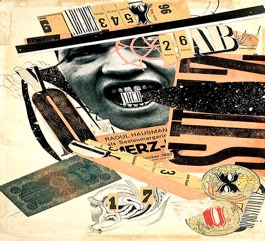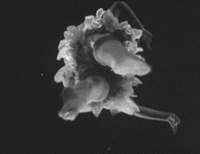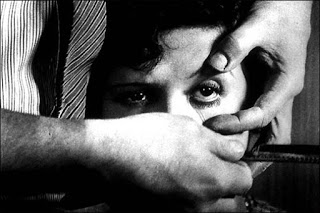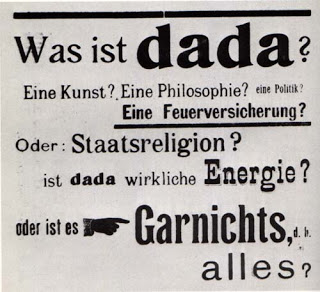Oddball Films Media
•
Sep 2, 2015
Oddball Films presents Beyond Reason - Dada and Surrealist Cinema, an evening of nonsensical experimental film from Marcel Duchamp, Man Ray, Luis Buñuel, Rene Clair and more all screened from 16mm prints from Oddball's massive archive. Realism is overrated and this program explores the magnitude of creative expression when freed from the constraints of rational and linear structures. Helmut Herbst’s An Alphabet of German DADAism (1968) is a mind-bending and comprehensive A-Z examination of dadaists shot in true dadaist style with the cooperation of Hans Richter and Richard Hulsenbeck, featuring sound-artist Kurt Schwitters, satirist George Groz, Max Ernst and more. Marcel Duchamp and Man Ray’s stunning Anemic Cinema (1926) is a visual cacophony of hypnotic puns. Rene Clair's Entr'acte (1924) disrupts all sense of reason through seemingly random juxtapositions that defy convention and construct new associations with familiar events and objects. Don't miss one of the seminal works of surrealist cinema: the legendary eyeball-slitting surrealist masterpiece Un Chien Andalou (1928) by Salvador Dali and Luis Bunuel. Plus! The Salvador Dali-inspired cartoon Dough For the Do-Do (1949), a tribute to surrealism starring Porky Pig. Early arrivals will be treated to Richter on Film (1972) - a conversation with the founding father of Dadaism with excerpts of his films from the 1920s. So come down to Oddball for a bunch of beautiful nonsense!
Image

Date: Thursday, September 3rd, 2015 at 8:00pm
Venue: Oddball Films, 275 Capp Street San Francisco
Admission: $10.00 Limited Seating RSVP to RSVP@oddballfilm.com or (415) 558-8117
Web: http://oddballfilms.blogspot.com
Web: http://oddballfilms.blogspot.com
Featuring:Germany-DADA: An Alphabet of German DADAism (Color and B+W, 1968)
Produced and directed by Helmut Herbst.
In post-World War I Zurich, out of the conflict's sobering aftermath, there was born an artistic movement that preached an anti-establishment, anarchistic, baffling, radical-yet-whimsical philosophy of creativity. Ridiculing traditional ideas of form and beauty in the accepted arts, random and meaningless by definition, calculatedly irrational by design, the movement spread like revolt to America and across Europe, voicing the delightfully bizarre protest of a brave new community of artists and writers. Featuring painter and sound artists like Kurt Schwitters, satirist George Groz, Hans Arp, Max Ernst and many, many influential figures in the movement. Filmed with the cooperation of original Dadaists Hans Richter and Richard Hulsenbeck, this unique motion picture collage of art, music and poetry is not only an alphabet of German Dadaism, but is in itself, a true Dadaist experience.
Image
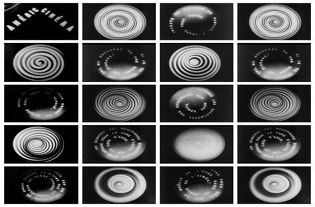
Anemic Cinema (1926, B+W, Silent)
Directed by Marcel Duchamp and Man Ray
“I have forced myself to contradict myself in order to avoid conforming to my own taste.”
-Marcel Duchamp
The only film to come from the founder of the Dadaism movement (artistic and literary movement from 1916-1923 “Anemic Cinema” is an abstract and annalistic film short containing rotating circles and spirals interlaced with spinning discs of words strung together in elaborate nonsensical French puns.
"Duchamp used the initial payment on his inheritance to make a film and to go into the art business. The film, shot in Man Ray's studio with the help of cinematographer Marc Allégret, was a seven-minute animation of nine punning phrases by his alter ego Rrose Sélavy. These had been pasted, letter by letter, in a spiral pattern on round black discs that were then glued to phonograph records; the slowly revolving texts alternate with shots of Duchamp's Discs Bearing Spirals, ten abstract designs whose turning makes them appear to move backward and forward in an erotic rhythm. The little film, which Duchamp called Anemic Cinema, had its premiere that August at a private screening room in Paris." -Calvin Tomkins
Entr’acte (B+W, 1924)
This extraordinary early film from director René Clair was originally made to fill an interval between two acts of Francis Picabia’s new ballet, Relâche, at the Théâtre des Champs- Elysées in Paris in 1924. Entr’acte is a surrealistic concoction of unrelated images, reflecting Clair’s interest in Dada, a radical art form relying on experimentation and surreal expressionism. Clair’s imagery is both captivating and disturbing, giving life to inanimate objects (most notably the rifle range dummies), whilst attacking conventions, even the sobriety of a funeral march. The surrealist photographer Man Ray also puts in an appearance, in a film which curiously resembles his own experimental films of this era.
This extraordinary early film from director René Clair was originally made to fill an interval between two acts of Francis Picabia’s new ballet, Relâche, at the Théâtre des Champs- Elysées in Paris in 1924. Entr’acte is a surrealistic concoction of unrelated images, reflecting Clair’s interest in Dada, a radical art form relying on experimentation and surreal expressionism. Clair’s imagery is both captivating and disturbing, giving life to inanimate objects (most notably the rifle range dummies), whilst attacking conventions, even the sobriety of a funeral march. The surrealist photographer Man Ray also puts in an appearance, in a film which curiously resembles his own experimental films of this era.
Made in France by the brilliant Spanish director Luis Buñuel and the Spanish artist Salvador Dalí. Un Chien Andalou is one of the best-known surrealist films of the avant-garde movement of the 1920s. It uses dream logic that can be described in terms of then-popular Freudian free association, presenting a series of tenuously related scenes that attempt to shock the viewer's inner psyche. Its opening scene is one of the most famous in cinema history.
This Merrie Melodies short is a stunning animated tribute (and satire) to surrealism. In a background reminiscent of Salvador Dali and Krazy Kat, Porky Pig hunts a "Do-Do Bird" in "Darkest Africa," where he encounters strange creatures and landscape in "Wackyland." The strangest of all is the "last do-do," who turns out not to be the last at all. Directed by Bob Clampett and Friz Feleng with music by the great Carl Stalling and the voice of Mel Blanc.
For the Early Birds:
Image

The brilliant painter, Dadaist and abstract/avant garde filmmaker Hans Richter talks about his experimental films of the 1920's. Excerpts from Rhythm 2 (1921),Race Symphony (1928), and Ghosts Before Breakfast(1927) are included. Richter moved from Switzerland to the United States in 1940 and taught in the Institute of Film Techniques at the City College of New York.
While living in New York, Richter directed two feature films, Dreams That Money Can Buy (1947) and 8 x 8: A Chess Sonata in 8 Movements (1957) in collaboration with Max Ernst, Jean Cocteau, Paul Bowles, Fernand Léger, Alexander Calder, Marcel Duchamp, and others. In 1957, he finished a film entitled Dadascope with original poems and prose spoken by their creators: Hans Arp, Marcel Duchamp, Raoul Hausmann, Richard Huelsenbeck, and Kurt Schwitters. Richter was also the author of a first-hand account of the Dada movement titled Dada: Art and Anti-Art which also included his reflections on the emerging Neo-Dada artworks.
About Oddball Films
Oddball films is a stock footage company providing offbeat and unusual film footage for feature films like Milk, documentaries like The Black Panthers: Vanguard of the Revolution, Silicon Valley, Kurt Cobain: The Montage of Heck, television programs like Mythbusters, clips for Boing Boing and web projects around the world.
Our screenings are almost exclusively drawn from our collection of over 50,000 16mm prints of animation, commercials, educational films, feature films, movie trailers, medical, industrial military, news out-takes and every genre in between. We’re actively working to present rarely screened genres of cinema as well as avant-garde and ethno-cultural documentaries, which expand the boundaries of cinema. Oddball Films is the largest film archive in Northern California and one of the most unusual private collections in the US. We invite you to join us in our weekly offerings of offbeat cinema.
Oddball films is a stock footage company providing offbeat and unusual film footage for feature films like Milk, documentaries like The Black Panthers: Vanguard of the Revolution, Silicon Valley, Kurt Cobain: The Montage of Heck, television programs like Mythbusters, clips for Boing Boing and web projects around the world.
Our screenings are almost exclusively drawn from our collection of over 50,000 16mm prints of animation, commercials, educational films, feature films, movie trailers, medical, industrial military, news out-takes and every genre in between. We’re actively working to present rarely screened genres of cinema as well as avant-garde and ethno-cultural documentaries, which expand the boundaries of cinema. Oddball Films is the largest film archive in Northern California and one of the most unusual private collections in the US. We invite you to join us in our weekly offerings of offbeat cinema.



